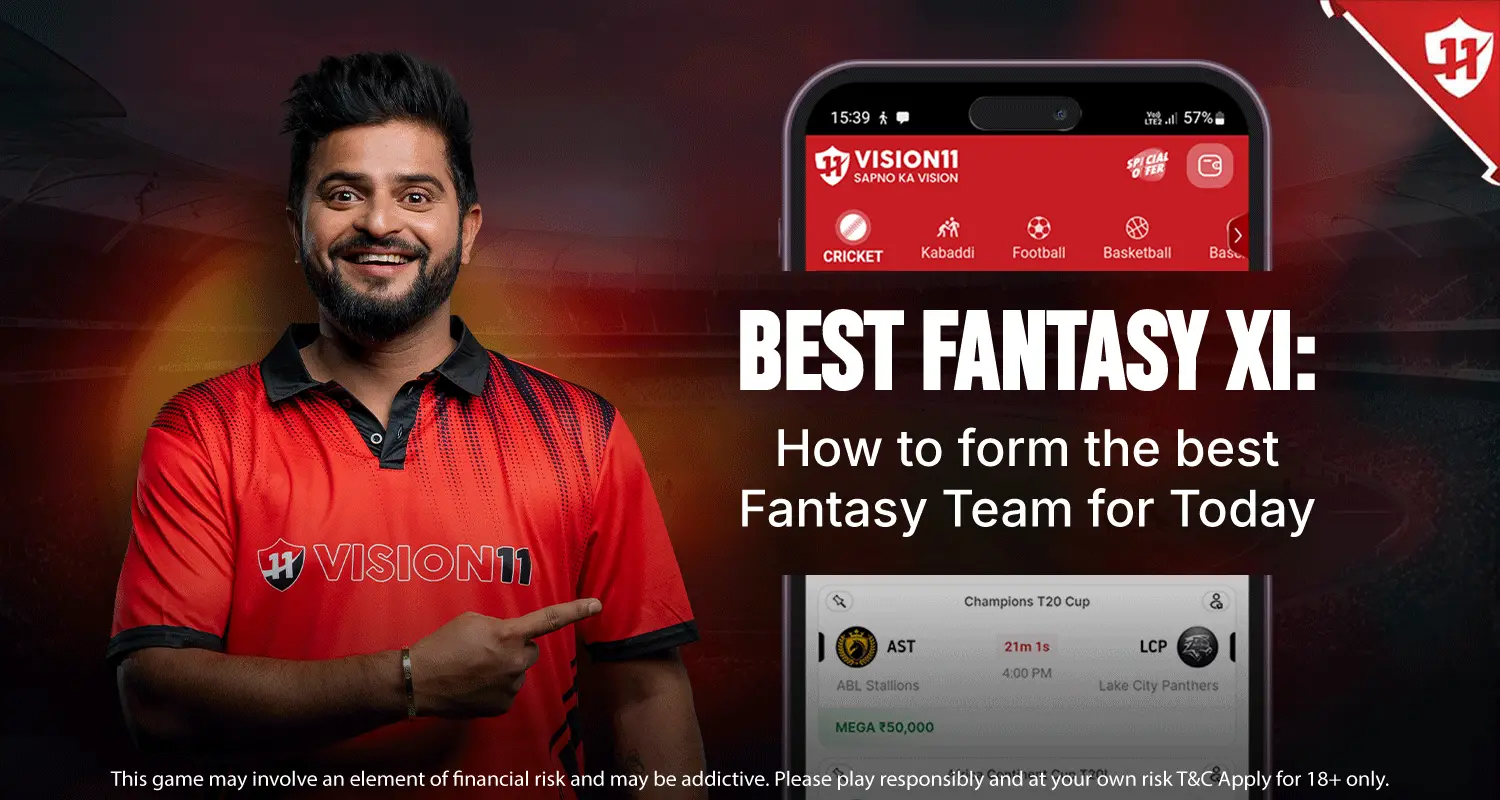1.Know the Match Context: It Shapes Everything
Your first task isn’t picking players – it’s understanding the match they’ll play. Different formats (T20, ODI, Test) demand different player profiles. The performance of a team is significantly impacted by the venue conditions, weather, and type of pitch.
Before forming your team, ask:
- Does this pitch offer more help to the spinners, or is it better suited for the fast bowlers?
- Do batters thrive at this ground, or is it a bowler’s graveyard?
- What’s the team combination expected for each side?
Even elite players struggle when conditions aren’t on their side. Knowing the battlefield before placing your troops is non-negotiable.
2.Form > Fame: Pick Who’s Delivering Now
Many fantasy players fall for names. But reputation doesn’t fetch points – performance does.
Focus on:
- Last 5-match performance trends
- Recent injuries or workload concerns
- Players’ confidence is visible in interviews or pressers
A less-heralded batter scoring 40s consistently offers more value than a superstar with three ducks in a row. Focus on your present performance, not just fame without substance.
3.Balance is Key: Don’t Overload One Department
An all-batter or all-bowler side won’t go far. A well-rounded team gives you flexibility and better coverage during the game.
Aim for:
- One or two solid all-rounders who make an impact with both bat and ball.
- At least one bowler who takes wickets regularly in the middle overs
- The more balls openers face, the more fantasy points they rack up.
The key is distribution: every role on the field must be represented in your team.
4. Budget Management: Spend Where It Matters Most
Fantasy budgets don’t stretch forever—if you spend big on too many star players, you’ll end up with holes in the rest of your lineup. Your team is only as strong as the least reliable player you pick.
Strategies to stretch your budget:
- Mix premium picks with undervalued players showing good form
- Watch for players promoted up the order unexpectedly
- Track players who offer dual value (e.g., Part-time bowlers who bat in the top order)
Players who give you great value usually quietly rack up important points in fantasy leagues.
5.Captain & Vice-Captain: Choose Your Multipliers Wisely
Your captain scores double points, while your vice-captain gets one and a half times the points. These two can make or break your game.
How to pick them:
- Consistency is more important than explosiveness
- All-rounders offer more opportunities to score points.
- Avoid risky players with recent injuries or role uncertainty
Think of these two as your anchors – they must deliver regardless of how the rest of the team performs.
6.Analyze Opposition Weaknesses
If team A struggles against spin and you know a mystery spinner from Team B is playing, that’s a valuable insight. Exploiting the opposition’s known issues helps you pick game-changers.
Look at:
- Head-to-head records
- The team’s past struggles in similar conditions
- Specific player matchups (e.g., a batter consistently getting dismissed by left-arm seamers).
Smart fantasy players don’t just pick who’s strong – they pick who’s strong against the opponent.
7. Don’t Copy-Curate – Create Your Own Strategy
Copying teams from leaderboards or social media often leads to generic lineups. Differentiators win leagues.
How to stand out:
- Make bold but logical calls (like choosing a new opener after a promotion)
- Avoid crowd bias – if everyone picks the same captain, one differential pick can change your rank.
- Watch for late updates that others might miss (like last-minute team changes).
Original thinking, backed by data, is what separates top fantasy players from the rest.
8. Watch the Toss – Make Final Tweaks
Especially in T20s, the toss affects team strategy. A team chasing might prefer aggressive openers, while one batting first might play conservatively.
Wait until toss results are in before locking your final XI. Players sitting out, unexpected debuts, or altered batting orders can all impact your selections.
9. Track Players’ Roles – Not Just Names on a List
Sometimes, a player’s role changes mid-season. Sometimes a finisher gets moved higher up the batting order. A part-time bowler may suddenly start bowling their full quota.
Keep track of:
- Batting positions
- Bowling performances, especially early in the innings or during the final overs
- Changes in fielding positions – boundary fielders often get more catches
Understanding how a player is used gives more insight than just seeing them on a playing XI list.
10. Play Multiple Contests, Test Multiple Strategies
Don’t put all your eggs in one basket. Enter different types of contests:
- Small leagues for steady growth
- Grand leagues with bold strategies
- Head-to-Head for testing predictions
This helps you understand which picks work in which formats and allows you to develop a dynamic playstyle.
Conclusion
Winning in fantasy isn’t about luck or big names – it’s about reading the game smarter than everyone else. When you understand the match context, value forms over fame, make smart budget calls, and back your own insights, you build a team that isn’t just good – it’s elite.
Vision11 rewards strategy. So the next time you’re about to form your fantasy team, think like a selector, not just a fan. Build your Best XI – one calculated decision at a time.
FAQ’s?
It depends on the match format and pitch conditions, but a balanced 4:3 or 3:4 split between batters and bowlers works well in most situations.
Not necessarily. Choose a player based on recent form, role in the team, and match conditions – not just reputation.
You should assess them based on opponent, recent form, and expected role in that specific match. Don't blindly keep the same duo.
Mixing players from both teams gives you a better chance to score across innings and phases of the game.
Absolutely. Catches, run-outs, and stumping can boost a player's tally significantly, especially in T20s.
Share Post on:
